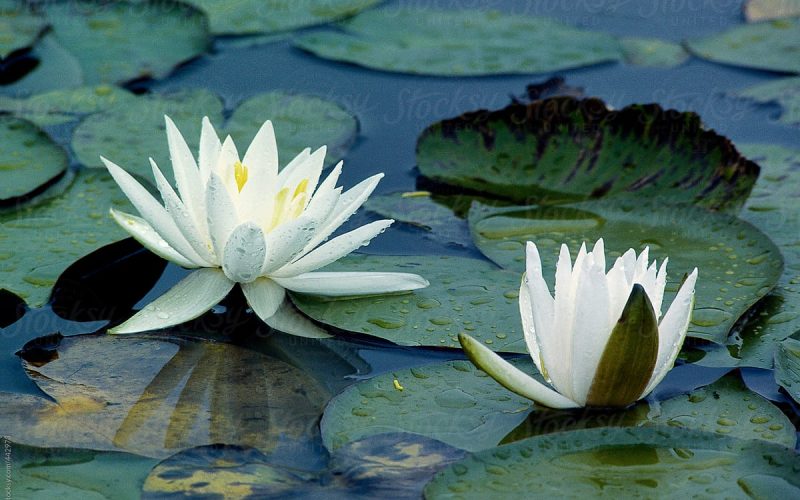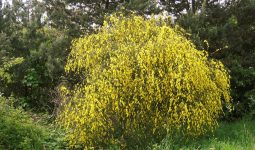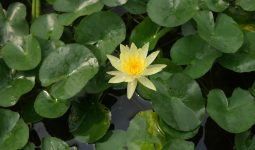Nymphaea odorata, is an aquatic plant also popularly called the American white waterlily, beaver root, fragrant water-lily, fragrant white water lily, sweet-scented white water lily, white water lily, and sweet-scented water lily.
This plant belongs to the genus Nymphaea.
- Scientific name: Nymphea odorata
- Kingdom: Plantae
- Rank: Species
- Higher classification: Water lily
- Family: Nymphaeaceae
- Order: Nymphaeales
Physical Characteristics of the scented water lily
The leaves
The leaves of the Nymphaea odorata grows up to 9.84 inches in length, green at the top, slightly green with some red or purplish-red at the bottom.
The flowers
The flowers are very smelly, with sepals that are often purplish on the back. The flower is elliptical, egg-shaped or sword-shaped, and can be up to 3.16 inches long and 1 inch wide. Flowers usually have more than 25 white petals.
The Fruit
The Nymphaea odorata fruit is globe-shaped and measures 1-1.19 inches in diameter
The Seeds
The seeds have a 3-D ellipse shape and can grow up to 0.08 inches long
The Stem
Nymphaea odorata has a Rhizome stout stem that is mostly about 1-1.19 inches thick
Where Does it Grow?
Though white water lily can be domesticated, it is naturally found in lakes, ponds, slow streams, and ditches.
Pros and Cons of American White Water Lilies
Almost all parts of the Nymphaea odorata plant is a food of animals and other organisms. Deer, beaver, nutria, muskrat, and other rodents are known to feed on the leaves and rhizomes of the white water lily, while ducks feed on the seeds.
The submerged portions of the Nymphaea odorata and all aquatic plants are known to provide a home for many micro and macroinvertebrates.
In turn, these invertebrates are used as food by marine creatures like fish and some other wildlife species like amphibians, ducks, reptiles.
After the Nymphaea odorata and other aquatic plants die, they decompose by bacteria and fungi and provides food called “detritus” for many other marine invertebrates.
Cultivation Options
Water lily can easily be propagated by picking up and transplanting rhizomes into bowls or gardens contains shallow, clear water during the cold season or the winter.
Habitat:
The fragrant water lily or Nymphaea odorata prefers still, relatively shallow water or between 5-7 ft. That’s why they are found in ponds, ditches, and similar water bodies that have mucky, silty beds.
Fun Facts:
There are several white water lilies, but the fragrant water lily is the most common. Unlike most of the dry land plants where the stomata is located on the underside of their leaves, the fragrant water lily has a different structure as its stomata is located on the upside of its leaves.
The plant’s fleshy rhizomes are a common food source for rodents like muskrats. This water lily, in particular, is native to the eastern part of North American. However, the plant’s commercial appeal initiated its spread and dispersal to other parts of the world.
As a result of this spread to other places, the fragrant water lily has now become a secondary invader that, in many cases, can be quick to achieve extraordinary population growth and possibly destabilize underwater ecosystems.








